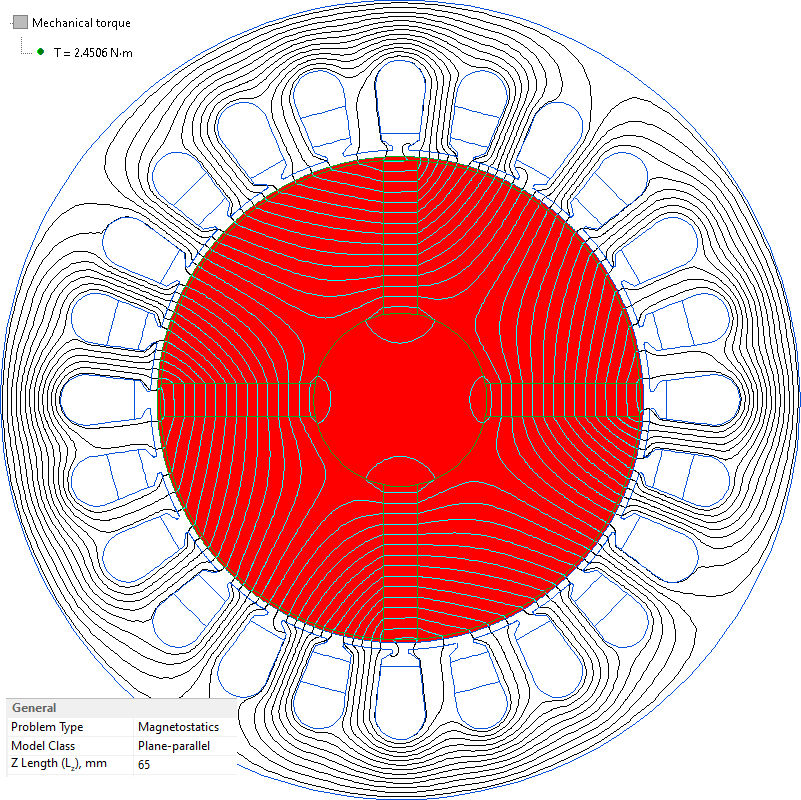Synchronous machine power-angle curve
QuickField simulation example
The main characteristic of a synchronous motor is the electromagnetic torque vs. load angle dependence. In synchronous machines the rotor and the stator magnetic field rotate with the same angular velocity. The load angle is measured between the rotor position and stator magnetic field. Without mechanical loading the load angle is zero - the rotor is always aligned with the stator field. As the mechanical loading increases, the rotor begins to lag behind the stator field and load angle increases.
We are going to simulate a simplified case. The power angle is predifined and the current in the stator winding is predifined. The task is to find a torque.
Problem type
Plane-parallel problem of DC magnetics.
Geometry
Machine z-length is 65 mm.
Given
Phase current density j = 3 А/mm²
Coercive force of NdFeB permanent magnets Hc = 730 kА/m
Power angle δ = 30° (electrical degrees).
The B-H curve for the stator and the rotor:
Task
Calculate the average torque.
Solution
Due to stator slotting the torque momentary value depends on the rotor position. To calculate the averge value we should simulate a series of problems with different rotor positions and appropriate momentary values of the current in the stator winding.
We assume that the rotor rotates in synchronism with the stator field. Hence the electromagnetic torque does not change with time.
To measure the torque you should specify momentary values of winding currents j*cos(phase angle) and set the rotor in proper position. For this analysis it doesn't matter whether the rotor or stator is rotating. It is convenient to rotate the stator relative to the rotor. Otherwise, when the rotor is rotated, the permanent magnets coercive force direction should have to be adjusted for each relative position
To automate the solution of a series of problems, it is convenient to use the LabelMover utility, which will automatically change the model and measure the electromagnetic torque.
Result
Magnetic field distribution and torque calculation for the load angle of 30 electrical degrees.

- Video: Synchronous machine power-angle curve. Watch on YouTube.
- Download simulation files (files may be viewed using any QuickField Edition).